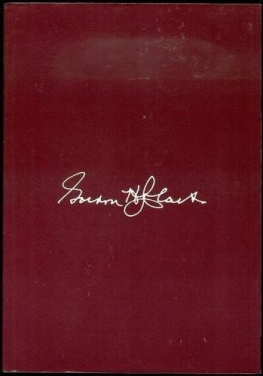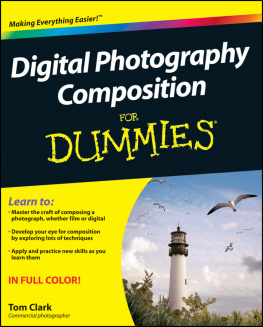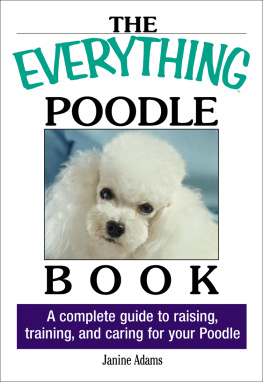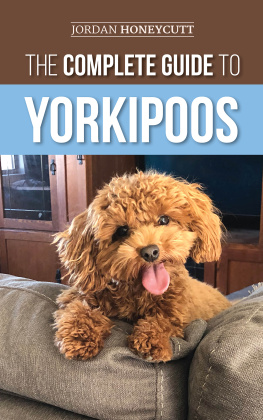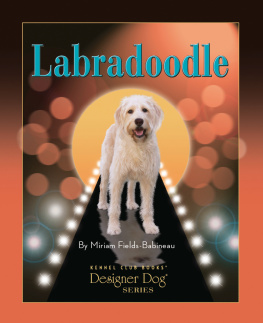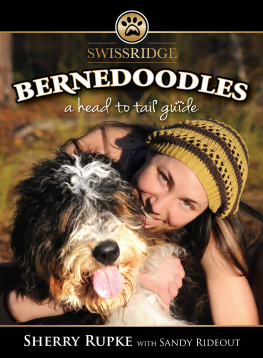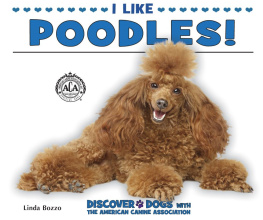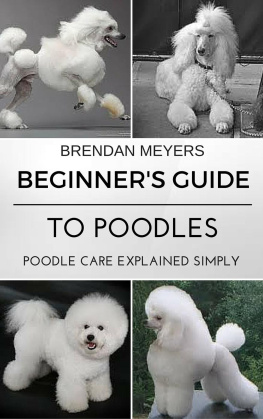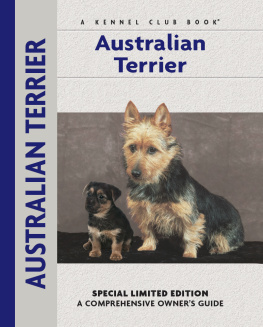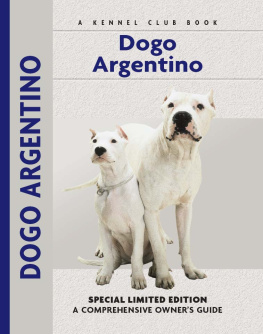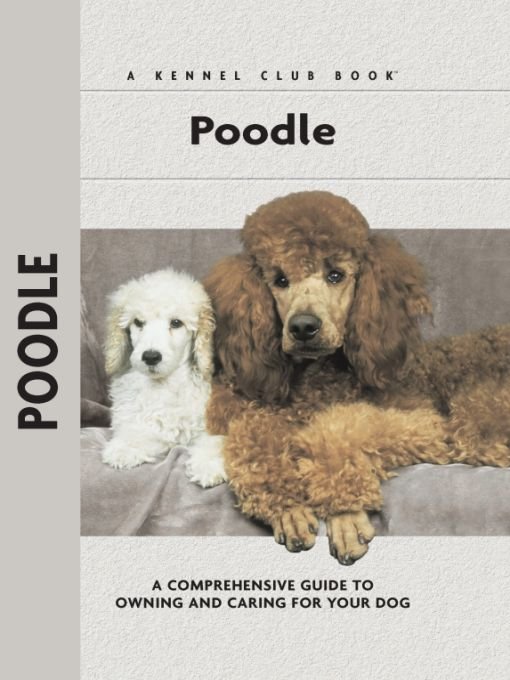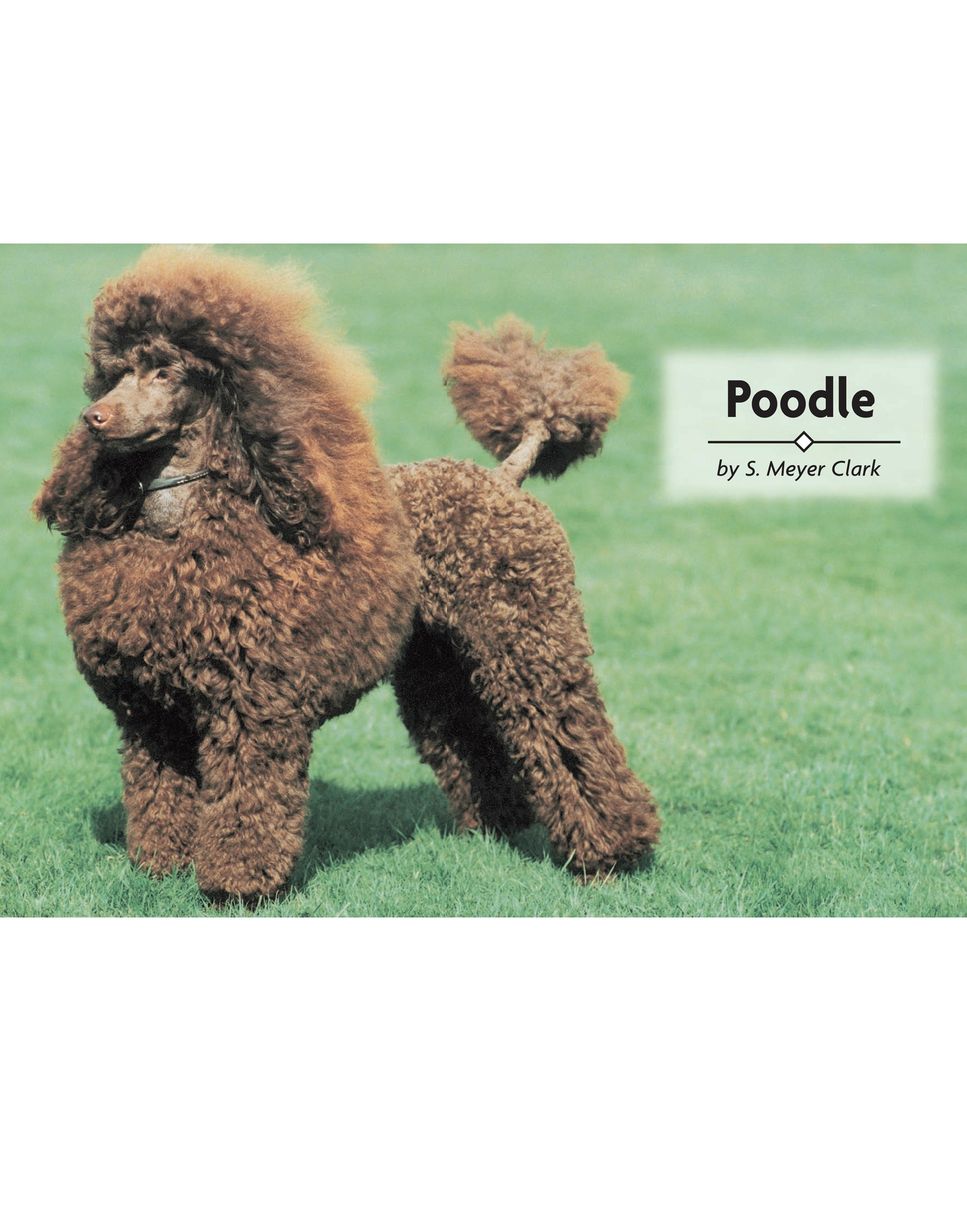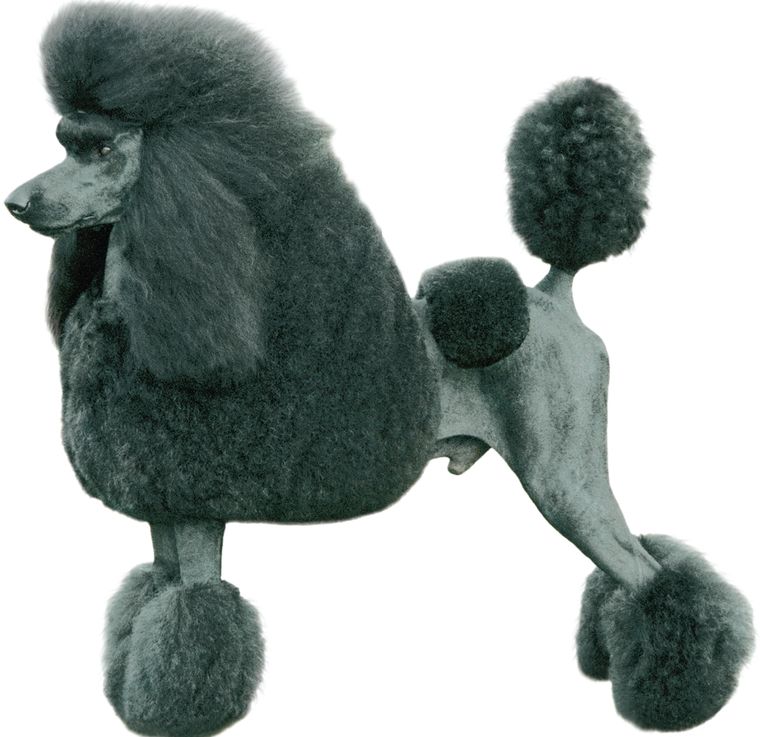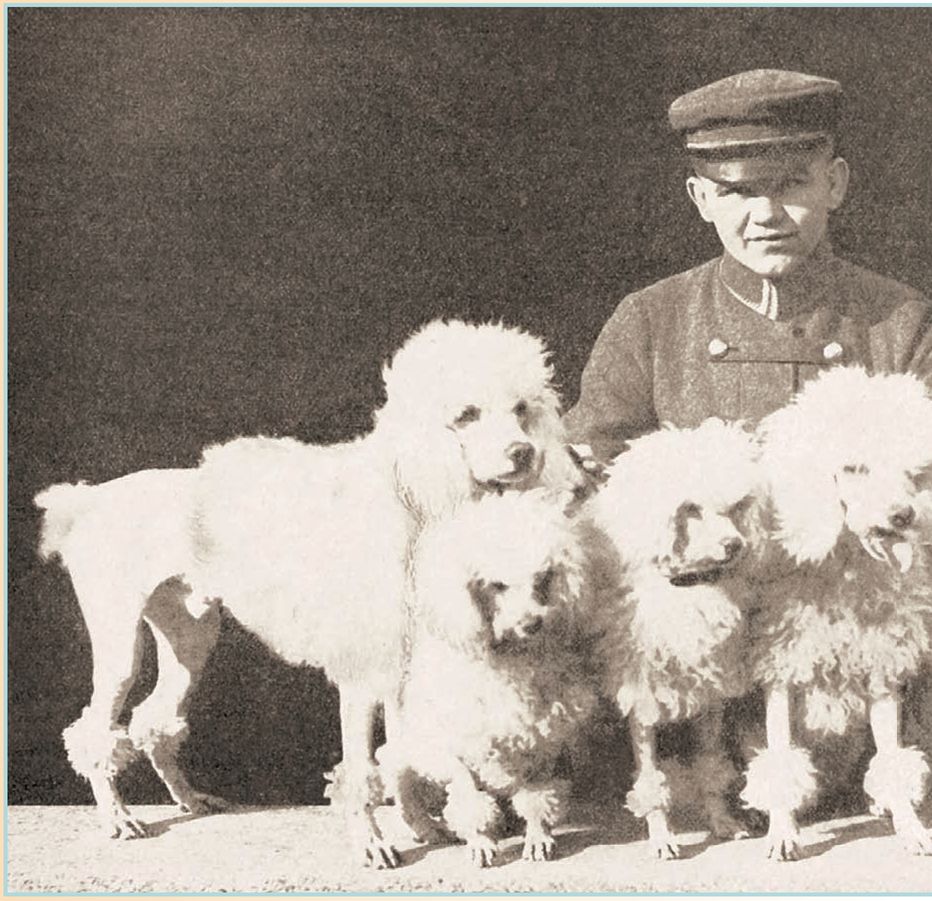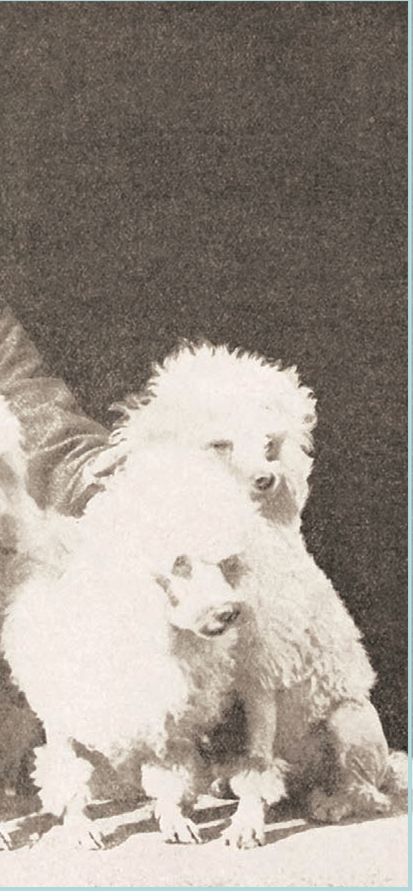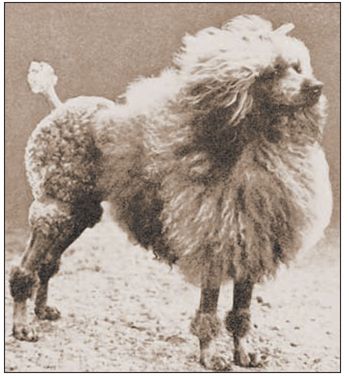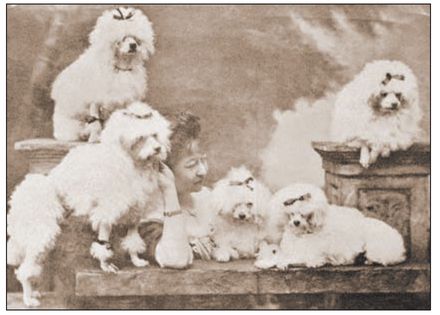Table of Contents
Skull: Moderately rounded, with a slight but definite stop. Length from occiput to stop about the same as length of muzzle.
Neck: Well proportioned, strong and long enough to permit the head to be carried high and with dignity.
Muzzle: Long, straight and fine, with slight chiseling under the eyes.
Teeth: White, strong and with a scissors bite.
Feet: Rather small, oval in shape with toes well arched and cushioned on thick firm pads. The feet turn neither in nor out.
Eyes: Very dark, oval in shape and set far enough apart and positioned to create an alert intelligent expression.
Ears: Hanging close to the head, set at or slightly below eye level. The ear leather is long, wide and thickly feathered.
Forequarters: Strong, smoothly muscled shoulders. The shoulder blade is well laid back and approximately the same length as the upper foreleg. When viewed from the side the elbow is directly below the highest point of the shoulder.
Physical Characteristics of the Poodle
(from the American Kennel Club breed standard)
Tail: Straight, set on high and carried up, docked of sufficient length to insure a balanced outline.
Body: Chest deep and moderately wide with well sprung ribs; loin is short, broad and muscular.
Topline: Level, neither sloping nor roached, from the highest point of the shoulder blade to the base of the tail, with the exception of a slight hollow just behind the shoulder.
Hindquarters: Angulation balances that of the forequarters. Muscular with width in the region of the stifles, which are well bent.
Size: The Standard Poodle (shown) is over 15 inches at the highest point of the shoulders. The Miniature Poodle is 15 inches or under with a minimum height in excess of 10 inches. The Toy Poodle is 10 inches or under.
Coat: Curly: of naturally harsh texture, dense throughout; or Corded: hanging in tight even cords of varying length; longer on mane or body coat, head, and ears; shorter on puffs, bracelets, and pompons.
Germany is credited as being one of the breeds countries of origin, where Poodles were bred as water retrievers. Pictured here are Poodles in Germany at the turn of the 20th century, before entering a Berlin dog show.
HISTORY OF THE POODLE
Understanding the history of a breed allows us to better appreciate the various qualities of the breed and gives us a guideline by which we can judge the potential for companionship of an individual within that breed. While the Poodle is a purebred dog that is infinitely familiar to most people, let us examine the ancestry of the Poodle to learn more about this most intelligent and affectionate of all canines.
ORIGIN OF THE BREED
In the Middle Ages, from as far back as the 12th to the 15th century, Poodle-like dogs appeared in art and on carvings, coins and Roman tombs. This ancient breed has always displayed a unique style of coat, whether it was corded (hanging to the ground in long twists of hair) or curly and wiry (lending itself to hand-scissoring in a variety of patterned trims).
In modern times, three countries emerge as the original homes of the Poodle: Germany, Russia and France. All three countries presented their versions of the Poodle; each was designed for specific purposes. For example, the German Poodles were referred to as Pudel dogs.
Eng. Ch. Gondolette, bred by Miss H. C. Throwgood in 1924, was the daughter of two famous dogs of the time, Eng. Ch. Ambrette and Eng. Ch. Cadeau.
These dogs were heavy-boned and bred to retrieve fallen game, such as ducks, from the waterhence the name Pudel, which means to splash in water.
The Russian Poodle was taller and more refined than its German cousin, thus lending itself to the role of companion dog. French Poodles were adored by the fashion world because their curly, woolly coats were ideal for elaborate grooming and styling. Their loving devotion to their owners also earned them high ratings.
For centuries, the Poodle has been considered the height of fashion. Note that these Miniatures have bows on their topknots as well as around their wrists.
When the Miniature Poodle eventually emerged in all three countries, it proved ideal as a circus dog. Owing to its intelligence and willingness to please, the Miniature Poodle was easy to train, appealing to audiences and easy to manage as the troupes moved from town to town.
Poodles were so popular in Europe that the famous Spanish painter Francisco de Goya rendered them in the 1700s. In fact, King Louis XVI of France commissioned Goya to create a portrait of a Poodle beloved by his wife, Marie Antoinette. Even before that, Albrecht Durer, a German artist, portrayed Poodles in his 15th-century paintings.
Many breed historians purport that, as far back as the first century, the Poodle was created by blending the white Maltese dog and the Spanish dog known as the Spaniel. Certainly both of these breeds could have contributed their friendly personalities to the Poodles gene pool. Additionally, the Spaniels love for water and its retrieving traits may be responsible for the Poodles ability to retrieve fallen ducks from the water.
Regardless of their country of origin, Poodles have been and continue to be excellent retrievers. They love to carry things in their mouths and are easily trained to retrieve fallen game for hunters as well as toys and other objects for pet owners. In addition, their love of water and swimming makes them desirable as family companions in todays world. Boat owners and beach-goers alike find their Poodles eager to accompany them for sport and fun. Many Poodles even love to walk in the rain.
Until the 16th century, Poodles were large dogs known as Standards. They needed to be large, strong dogs, capable of retrieving fallen game, because they were primarily hunters dogs. This work, however, created one serious problem. Since hunting back in the early times was for food rather than for sport, men in the Middle Ages needed a dog that would bring in game wherever it fell. However, when the game fell over the water, the heavily coated Poodle would often drown while attempting to retrieve the fallen bird. The Poodles thick coat would soak up so much water that the dog could not stay afloat due to the weight of the water.



